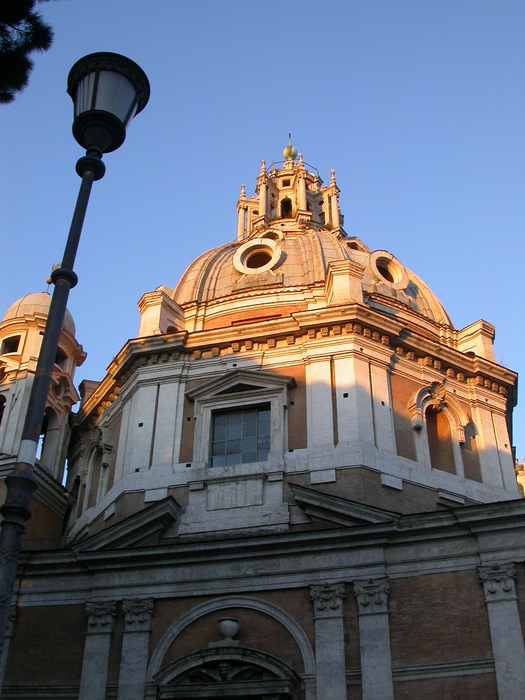
The first of them is only a few feet from the giant column of Trajan. This is the Santissime Nome di Maria. We decided to try the door, just on a lark, and found that the place was open and apparently unguarded.
One thing Rome has in abundance is churches. Many of them are open to the public, and they don't seem to mind if tourists are there to worship or just to gawk. These two churches are just a block or so away from one another, just opposite the Imperial Fora and Victor's Monument. Worship of Mary may not be as popular here as it is in Mexico, but it still seems that most of the little churches have Maria in their name.

The first of them is only a few feet from the giant column of Trajan. This is the Santissime Nome di Maria. We decided to try the door, just on a lark, and found that the place was open and apparently unguarded.
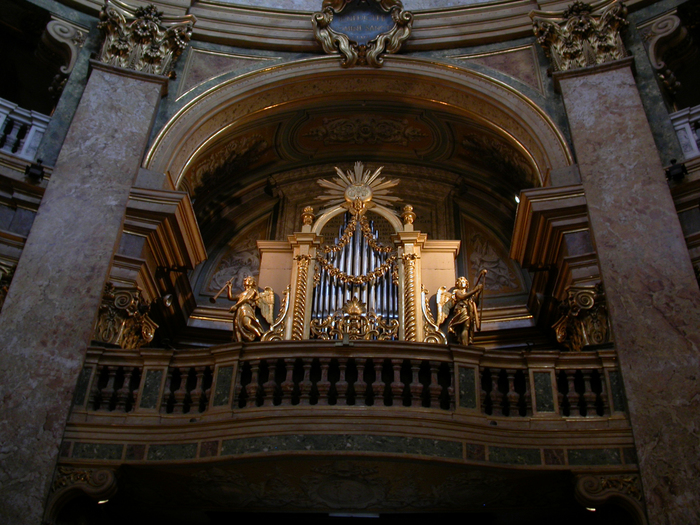
There were about 15 pews and two or three people sitting quietly in them, perhaps praying or just looking around. Despite the graffiti painting nearly every Roman street, it appears respect for the church is universal enough that a place such as this may be left without an attendant. The place had plenty of these sort of garish gold angels and cherubs, but what amazed me about the place was the stonework.
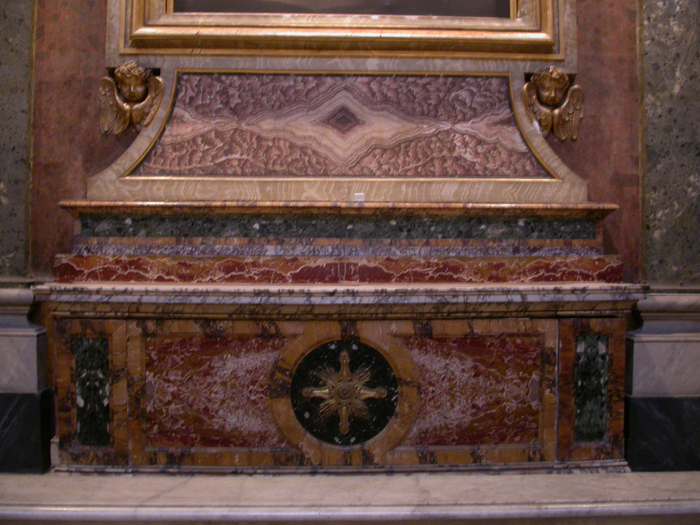
The variations of cut colored marble (and maybe some other stones, I'm no geologist) were unbelievable. I think the colors are natural, too - the churches are generally 15th-17th centuries, and I doubt the dying of stone was very advanced at that time. Besides, we later learned that most of this beautiful stone had been lifted from the Roman forums and temples, which had once been paved and decorated with such pieces. (If you haven't already, take a look at the Roman Forum and Imperial Fora ruins. Picture those three and five storey high walls covered with these stones, the floor paved in bright marble tiles, and the columns stark white against them. Beginning to hear those sandals on stone?)
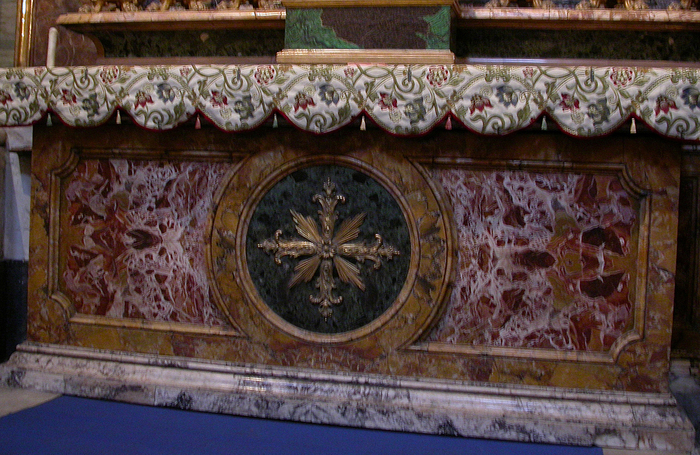
The marble was everywhere in this church. The walls were all laid with grey marble, but with wide inlays of colored marble around the doors.
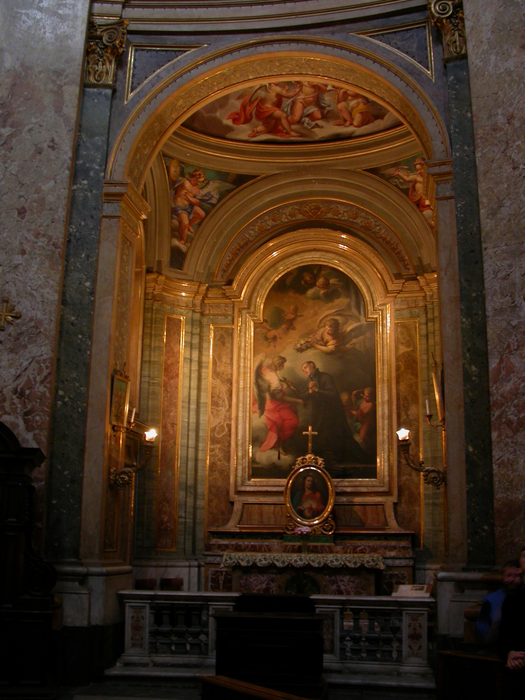
Each of the alcoves contained paintings that would only be in a museum in the U.S. I have not researched the date nor the artist of these pieces, but the skin tones have a luminous quality popular in the 17th century. Again, note the stonework surrounding the paintings and continuing around the walls.